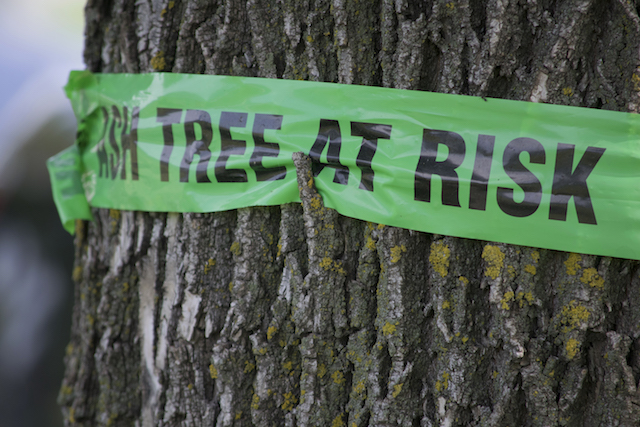
Common Signs of Tree Disease
Nobody wants to deal with a tree disease. Trees are beautiful to look at, fun to climb and lovely to sit under when you need some shade. But most importantly, trees provide the life-giving oxygen that all life on earth needs to survive. That’s why it’s so important to monitor your trees for tree disease symptoms and contact a tree service such as Safari Tree before disease sets in.
Once an infection takes hold, if not properly treated, your trees may need to be removed. Safari Tree, Michigan’s premiere tree care experts takes Michigan tree disease and tree fungus treatment issues seriously so we have compiled this guide so that you can learn the warning signs and keep your trees happy and healthy.
Check the Bark
The bark is like a tree’s skin and can tell you a lot about the health of your tree. As with human skin, healthy bark will look healthiest when it is soft and flexible. If your tree’s bark seems brittle, scratchy or is noticeably flaking, this means your tree is fighting for its life.
Additionally, bald spots can also signify tree bark diseases. There are many things that can make a tree sick from bacteria, fungi and bug infestations to issues with birds.
Monitor the Leaves
While it’s normal for trees to lose leaves during the fall, if you notice sudden, unexplained leaf loss the rest of the year, it might be time to call in the professionals. The leaves are one of the first signs that can clue you in to a potentially sick tree.
If it’s spring or summer and you notice that your leaves are shriveled, dry and dropping from the tree at an excessive rate, your tree will need some TLC stat. Other symptoms can include strange spots or patches of rust on the leaves. These are also signs of shrub disease symptoms and will need professional treatment.
Watch out for Wild Mushrooms
Mushrooms and other types of fungus are never good news for a tree. If you see patches of mushrooms growing on the bark or the trunk, call us at Safari Tree right away. There are fungicides that can get rid of these nasty infections but if fungus spreads, it can kill the tree.
Falling Branches
It’s normal for branches to fall every now and again. This is especially true if there has recently been a great deal of wind or a storm. However, like leaves, if you notice excessive falling branches, take a closer look. If they are dried out or rotten, there may be an insect infestation taking hold.
Sick Roots
The root network is arguably the most important part of a tree. Roots provide the tree with essential nutrients and water from the ground and also are responsible for keeping a tree erect and secure. However, if the roots of your tree get nicked by lawnmowers, get overly soggy from over-watering or display signs of wood ears or patches of mushrooms, your tree could be vulnerable to sickness. If your tree roots look sick or you aren’t quite sure if they are at risk, contact us today.
Michigan Tree Disease Control
With proper maintenance, trees can grow for decades offering shade, beauty and fun. But if you suspect your tree might be sick, contact Safari Tree for help battling the infection. We specialize in the treatment of sick trees and also provide removal services for any trees that are past the point of help. Our team also has a seasonal tree care program for tree disease prevention. This includes Ash tree disease prevention.
Sick trees can be dangerous as they are more brittle and can easily break, whether that’s the trunk or branches, and cause damage to property or any people or pets nearby. Contact us for a free estimate. We look forward to caring for your trees.





